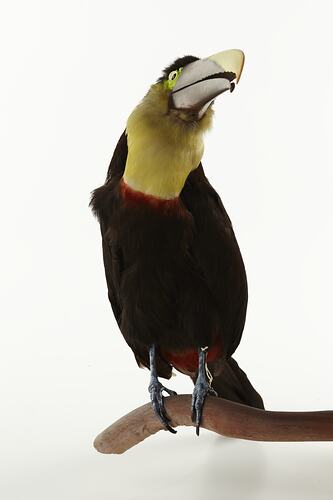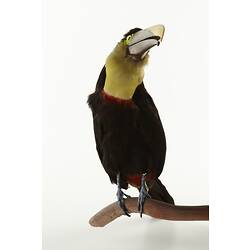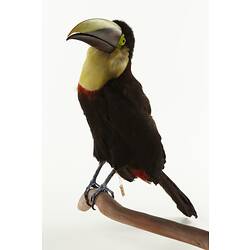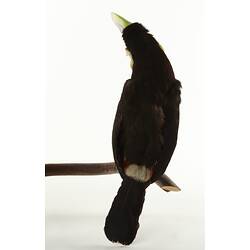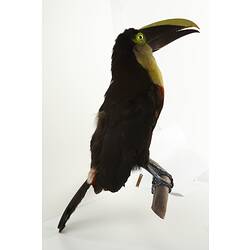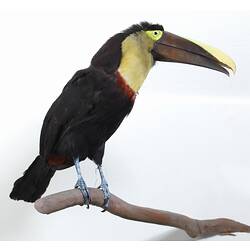Summary
The Black-mandibled Toucan has, like all toucans, a large bill. The upper and lower parts of the bill are called mandibles and in this species the lower mandible is almost entirely black and the upper mandible is black with a yellow tip. As another of its common names, Yellow-throated Toucan, suggests the feathers of its neck are yellow, while the rest of its plumage is largely black. The bare skin around the eye is green.
The species occurs in forested areas, usually at elevations over 1000 meters across a wide range of South and Central America. Black-mandibled Toucans feed on fruits and are an important seed disperser for some fruiting trees. They will also eat flowers, insects and small vertebrates.
Exactly where this specimen came from is unknown.
Although they are currently considered quite common the International Union for Conservation of Nature (IUCN) lists Black-mandibled Toucans as being Near Threatened due to the risk of deforestation in the Amazon reducing their habitat by up to 40% over the next few decades.
Specimen Details
-
Taxon Name
-
Preferred Common name
Black-mandibled Toucan
-
Other Common Names
Yellow-throated Toucan
-
Number Of Specimens
1
-
Sex
Unknown
-
Specimen Nature
Nature: Mount, Form: Dry
-
Collected By
Unknown
-
Category
-
Scientific Group
-
Discipline
-
Collecting Areas
-
Type of Item
Taxonomy
-
Kingdom
-
Phylum
-
Subphylum
-
Class
-
Order
-
Family
-
Genus
-
Species Name
ambiguus
Geospatial Information
-
Precise Location
Unknown locality
